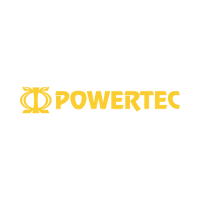
Do you have a question about the PowerTec 1000 and is the answer not in the manual?
| Brand | PowerTec |
|---|---|
| Model | 1000 |
| Category | Controller |
| Language | English |
Explains the GENESIS series of drives and their benefits to the user.
Details operating environment, altitude, temperature, humidity, and power requirements for the drive.
Covers speed regulation, accuracy, adjustments like acceleration, deceleration, speed limits, gain, stability, and current limit.
Physical dimensions for chassis and enclosed units of the Model 1000 and 1000A drives.
Lists and describes the function of each terminal on the Current Controller, Speed Controller, and Capacitor Boards.
Explains the function of jumpers and the meaning of various LED indicators on the control boards.
Discusses how the drive protects the motor, including thermal switches and current limiting.
Outlines the terms of the warranty and disclaims liability for improper use or installation.
Provides guidelines for mounting the drive unit, ensuring proper airflow and clearances for cooling.
Explains how to connect the three-phase AC power source to the drive, including safety and code requirements.
Details the wiring process for connecting the BLDC motor to the drive, emphasizing cable and grounding.
Guides on wiring an output contactor, including interlocking with the emergency stop.
Details how to connect dynamic braking, including safety interlocks and component selection.
Explains how to connect external control devices like pushbuttons and switches to the drive.
Describes how to obtain status information from drive outputs like RUN, FAULT, and ZERO SPEED LEDs.
Guides on connecting an analog speed reference, such as a speed pot or external voltage, to the drive.
Details connecting a digital speed reference, typically a pulse train, for precise speed control.
Explains how to connect a DIGIMAX controller to command motor movement in digital speed mode.
Provides a table detailing AC input voltage, horsepower, power, and current ratings for the drive.
Provides specifications for output and dynamic braking contactors, including coil requirements.
Explains the use and calculation of dynamic braking resistors for absorbing power.
Guides on wiring an output contactor, including interlocking with the emergency stop.
Details how to connect dynamic braking, including safety interlocks and component selection.
Details the functions and connections for various control inputs like RUN, STOP, JOG, and thermal protection.
Lists and describes the function of each terminal on the Current Controller, Speed Controller, and Capacitor Boards.
Explains how to interface the drive with a programmable controller using sinking and sourcing connections.
Provides information on operating the drive in digital mode using a frequency signal for speed control.
Compares the performance, accuracy, and coordination capabilities of analog and digital speed control modes.
A checklist to ensure all installation steps have been completed correctly before operation.
Illustrates the layout and provides connection details for the capacitor board.
Describes the sequence of events and LED indications when power is first applied to the drive.
Details the steps and conditions required to initiate motor operation using start commands.
Guides on adjusting minimum and maximum speed settings using potentiometers on the Speed Controller board.
Explains how to set acceleration time, deceleration time, and jog speed using control pots.
Covers adjustments for motor shaft stiffness, drive stability, and motor current limit.
Guides on making adjustments to motor speed, acceleration, deceleration, and jog speed for desired performance.
Introduces troubleshooting steps and required equipment for diagnosing drive issues.
Lists essential tools and equipment required for performing troubleshooting tests on the drive.
Lists commonly required spare parts for fast on-site repair of the drive.
Explains how to use troubleshooting charts and provides guidance for resolving issues.
Provides a procedure for testing transistor modules using a digital multimeter for continuity and resistance.
A flowchart to diagnose issues encountered during the initial power-up and start-up sequence of the drive.
Details the procedure for testing the diode bridge rectifier using a multimeter for proper functionality.
Guides on testing transistor leakage with the drive powered on, requiring careful handling of high voltages.
Continues the troubleshooting flowchart, focusing on bus voltage and component checks after initial power application.
The third part of the troubleshooting flowchart, focusing on encoder signals and related component checks.
The fourth part of the troubleshooting flowchart, addressing issues with RUN, ENBL, and fault LEDs.
The fifth part of the troubleshooting flowchart, covering motor turning, speed, and connection checks.
Shows encoder waveforms and details motor encoder connection methods and layouts for proper feedback.
Provides specific test procedures for diagnosing Instantaneous Over Current (IOC) and Over/Under Voltage (OV/UV) faults.
Illustrates the layout and connections of the driver board, detailing its components and wiring.
Explains the function and observation of LED indicators on the driver board for transistor status during operation.